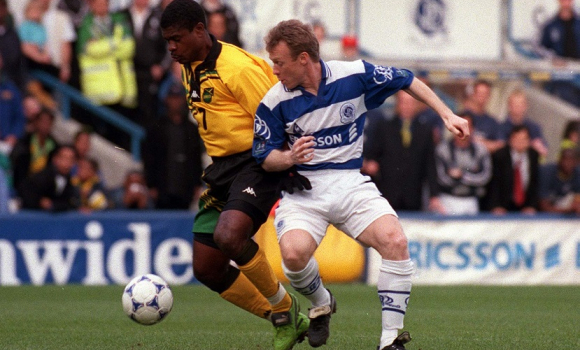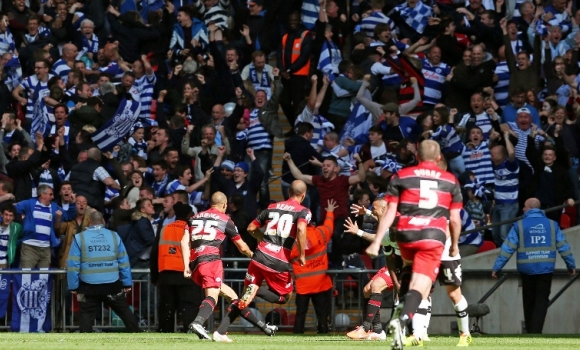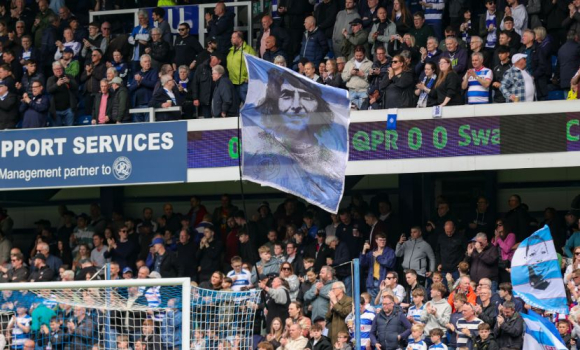QPR: The Modern Circus of West London – Column Monday, 4th Aug 2025 16:11 by Gareth Dixon As the faithful prepare to return to the Big Top this Saturday for another nine months and 48 games, Gareth Dixon reflects on the potted history of the club and where it stands now in the sport, in Shepherd’s Bush and in our lives in 2025. Bread, Circuses, and HoopsIn Ancient Rome, emperors subdued the restless with panem et circenses - bread and circuses. Feed the belly, entertain the crowd, and revolts could be avoided. Centuries later, as the French Revolution toppled monarchies and the British elite watched nervously from across the Channel, a similar instinct took hold: if people could be given a regular spectacle—organised, emotional, tribal—they might keep from directing unrest at the establishment. Enter football. In the backstreets of Victorian London, clubs like Queens Park Rangers emerged—not as businesses, but as rituals. QPR, founded in 1886, grew into one of West London's most emotionally charged and socially embedded institutions. This is more than a football team. It's a modern circus: a space where identity, community, belonging, rage, joy, loyalty and power converge. Origins: Football in the Shadow of RevolutionThe area that would become Shepherd's Bush was open countryside in 1771. By the 1890s, it had evolved into a dense sprawl of terraced streets populated by railway workers and first-generation Londoners. Conditions were harsh, housing was overcrowded, and whole streets shared outdoor toilets and communal water pumps. As industrial Britain expanded, football rose with it. The professional game took hold in urban centres because it needed a steady flow of paying spectators—crowds large enough to fund players' wages and club infrastructure. It was in the manufacturing towns of the Midlands and the North where the earliest professional sides were born. But even in less industrialised West London, the same patterns emerged: mass migration, new urban identities, and a growing appetite for shared spectacle. At the same time, Britain's elites watched anxiously as the working classes grew in number and confidence—organising through unions, protests and, occasionally, riots. Football offered a useful outlet: emotional, structured, tribal. It wasn't a conspiracy—but it was convenient—a way to channel unrest into ritual. Amid this churn, QPR emerged in 1886 from a combing Christchurch Rangers (founded 1882) and St Jude's Institute - or so the story goes. The traditional account holds that the club formed from a merger, but recent analysis suggests that this origin story may not be entirely accurate. Player records show little overlap between the two supposed predecessor clubs—suggesting, at most, that a few Christchurch players joined St Jude's, rather than a formal fusion. More of a migration than a merger. Even so, that 1882 date, while not the formal start of the club, would later be woven into its mythology—in 1982, perhaps QPR's original showman, Jim Gregory, leaned into that earlier founding to frame the FA Cup Final as a centenary journey. Gregory, who had previously been a board member at Fulham, brought a marketeer's instinct and flair for drama to Loftus Road. Whether the centenary spin was calculated branding or happy coincidence, it was quintessentially QPR: pragmatic myth-making that felt truer than the facts. Football, then and now, was never just a game. From its early days, it borrowed the form of the circus and the racetrack—enclosed spaces of spectacle, noise, and mass emotion. The referee as ringmaster. The ground as colosseum. A Club of Cultures: Identity, Migration and MusicQPR has always mirrored the soul of its neighbourhood. What began as a team for local lads became a symbol of working-class, migrant and multicultural West London. By the 1970s, Irish communities in Shepherd's Bush and Ladbroke Grove were at the heart of the club's support. Pubs like The Goldhawk and Flanagan's became matchday landmarks for generations of fans. Don Givens became a cult hero for many. After the Notting Hill race riots of 1958, Caribbean communities - particularly from Jamaica, Trinidad and Barbados - became foundational to West London identity. The Notting Hill Carnival, which took to the streets in 1966, soon became an annual heartbeat for the same streets QPR called home. Unlike clubs tethered to singular origin stories - Arsenal's military past, Millwall's dockside grit, though in truth their fan base drew from a broader sweep of working-class industries, or even Spurs, often associated with the Jewish community, but which began simply as a team backed by a local pub - QPR stood at a cultural crossroads. Our identity evolved, shaped more by sentiment than strategy.
So too with Rangers. The club's multiculturalism wasn't originally articulated - it simply emerged as the area grew. Affinity came before analysis. As with football chants that borrowed from public school slogans like "Play Up School", much of QPR's persona - scruffy, spirited, cheeky strut, defiant - took shape organically, later becoming lore. Irish, Caribbean, white working class, punks, poets, pensioners: QPR's identity has always been defined by inclusion, not exclusivity. And that cultural blend extended into music too. QPR's terraces once echoed with punk and alt-music legends - Mick Jones, Glen Matlock, Robert Smith - and maybe most famously, Pete Doherty, who wrote a QPR fanzine called All Quiet On The Western Avenue and included a photo of Kate Moss in a classic QPR shirt inside a Babyshambles album. It was fandom as folklore - shabby, subversive and sincere. Few clubs in England reflect such a collision of class, race, music and politics. QPR is the messy, beautiful soundtrack of West London. Not pristine, but powerful. QPR's identity doesn't stop at the turnstile - it bleeds into West London's cultural references in the media. From The Sweeney's car chases through Shepherd's Bush to The Four Year Plan'sboardroom chaos, the club has long been a backdrop for stories of tension, swagger and resilience. Even the DIY irreverence of People Just Do Nothing set in Brentford feels at home in QPR's patch: flawed, funny, and fiercely local. If Arsenal represent cinematic prestige and Chelsea the glint of Netflix wealth, QPR remains proudly lo-fi - more VHS than streaming. But it's real. And it's ours. The Community Club That Never LeftWhile many clubs chase global markets, QPR stayed profoundly local - but this wasn't mere sentiment. The QPR Community Trust now serves over 23,000 people annually, offering a range of services that span from youth crime prevention to supporting local pensioners from isolation. These programmes are a testament to the club's commitment to its community, and Andy Evans and his team deserve high praise for how the charitable arm of the club represents what is good about us. After the Grenfell tragedy, Loftus Road and the Trust rapidly became providers of support —not because of PR calculations, but because it had to be. In a moment of crisis, QPR didn't hesitate - they turned up and offered their help, motivated from the heart. These programmes exist because they must. Strip away results from the pitch, and you still have an institution serving one of London's most complex boroughs. Add back the hook of football, and it becomes clear: QPR isn't just a team. It's a cornerstone of the community. This isn't just charity work, it's integral to who we are. Despite our now regional and globally dispersed fan base, the club needs local support to survive, and the community needs institutions that won't abandon them when gentrification takes place. In W12, where a pint in some local watering holes costs nearly £8, average rent hits £2,500 a month for a two-bedroom flat, and house prices average £750,000, QPR remains one of the few places where roots and connection still matter more than bank balance. Drama, Despair, Delirium: The Circus in Full But it's not all community work and culture. This is still football. And what a show it's been. Every great circus needs highs, lows, and moments of awe. QPR has provided all three—sometimes in the same match. The Highs
The Lows These weren't just games. They were collective rituals of faith, betrayal, drama and defiance—the heartbeat of the QPR experience. The Online circusQPR fandom now stretches far beyond W12. It lives on forums, timelines, group chats and comment sections. But as football moved online, the fanbase fractured into distinct digital tribes: • Match-Going Faithful – The backbone of the club. From the teens producing the 'limbs' in the safe standing section and away ends to South Africa Road, Ellerslie Road, and official away coach elders, they're the heartbeat. For them, Saturdays are sacred. Away days are pilgrimages. They queue in the rain, belt out chants both old and new, and they judge every new signing by how they warm up near the Loft. They've seen it all, and they don't just watch QPR; they live it. The club lives in the bones, not in bandwidth. In the digital arena, nuance dies quickly. You're either a genius or a fraud. Every match is a referendum. Every comment is a call to arms. This is the new colosseum: blood or glory, all in 280 characters. But still, they come. Still, they chant, rage, weep and laugh. Whether shouted from the terraces or posted in pixels, the rituals remain. Fragmented—but fiercely faithful. The Future: Soul vs. SurvivalQPR faces a dilemma shared by many traditional clubs: can it modernise without losing soul? Loftus Road isn't just a ground—it's a pressure cooker. The noise doesn't rise—it bounces. You don't watch from a distance. You breathe it in. But beloved as it is, its intimacy caps the club's growth, and Lee Hoos has admitted: "We're not financially sustainable long-term in this stadium." And yet in 2024–25, season ticket prices rose by just £0.43–£1 per game—a subtle but meaningful commitment to keeping the club accessible. The new stadium question looms. And if it comes, we must ask: will it carry our echoes, or bury them under corporate gloss?
Meanwhile, gentrification is reshaping the borough, and Gen Z fans want digital access, authenticity and values. The club walks a tightrope: evolve without eroding identity. Grow without selling out. Few manage it. But QPR, as always, thrives in the tension, and ironically, after Fernandes and Co.'s failed experiment into Asia, QPR's fierce localism may now be its greatest global asset. Conclusion: The Circus ContinuesQPR may never be the wealthiest or most famous club in London—but it remains one of the realest. It reflects its people, its postcodes, its pain and pride. It is flawed, emotional, defiant—and utterly human. In an age of commercial super clubs and algorithmic fandom, QPR endures as something rarer: a club with soul. A place where West London gathers to feel something true. A team that doesn't just entertain—but represents. Like all great circuses, QPR doesn't just distract the crowd. It moves them. It gives them story, identity, and meaning. And in a world starved of those things, that makes QPR not just relevant—but essential. The curtain lifts. The drums roll. The gates open. The circus continues, and we’re still here. If you enjoy LoftforWords, please consider supporting the site through a subscription to our Patreon or tip us via our PayPal account loftforwords@yahoo.co.uk. Pictures - Ian Randall Photography Please report offensive, libellous or inappropriate posts by using the links provided.
You need to login in order to post your comments |
Blogs 31 bloggersDerby County Polls[ Vote here ] |
We in turn value your personal details in accordance with our Privacy Policy.


